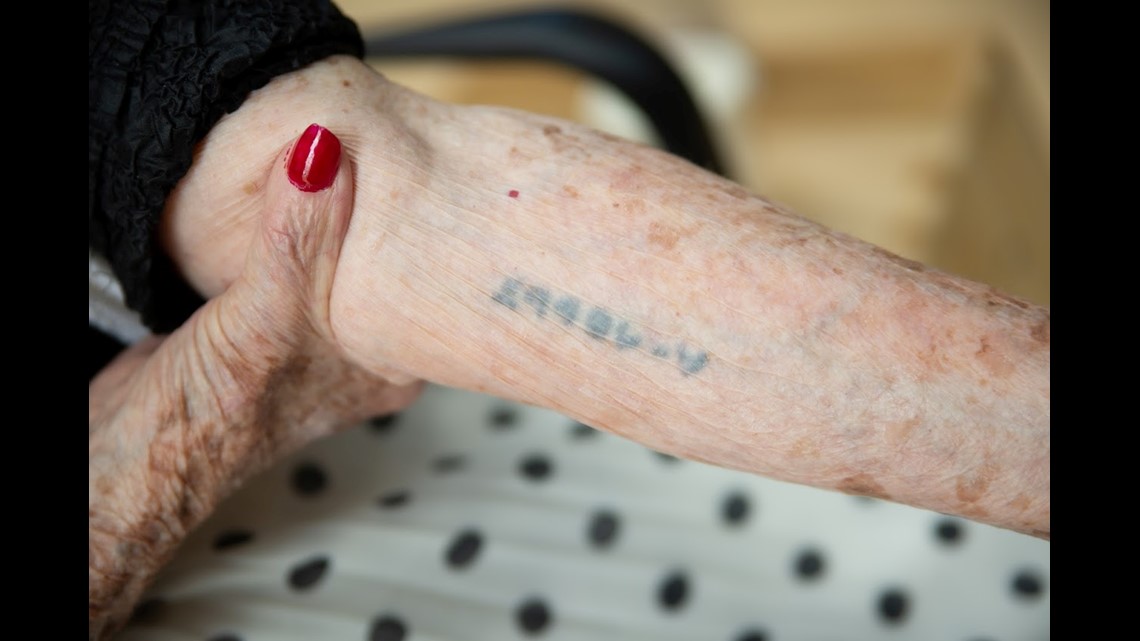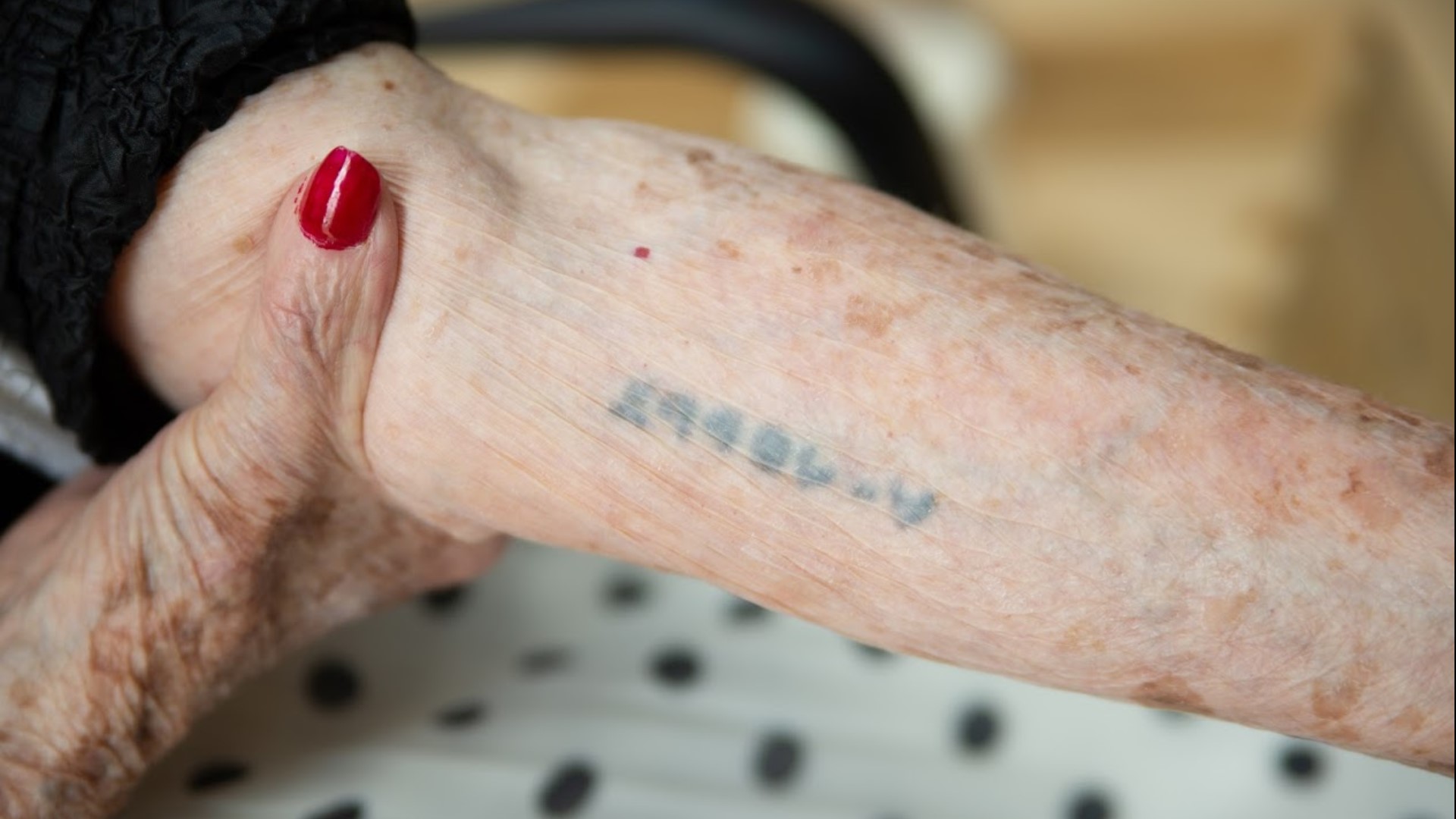WASHINGTON D.C., DC — Agi Geva stood in line with her younger sister after arriving at the Auschwitz concentration camp in German-occupied Poland when their mother Rozsa returned. Rozsa had walked ahead in the line to figure out what was going on. When she came back, she had a request for her girls: lie about their ages.
Agi was 14 and her sister, Zsuzsanna, was 13. But they told the guards that they were 19 and 18. Agi wore a scarf on her head to look older.
The lie saved their lives. Only after WWII ended did Agi find out that most young Jewish children were sent directly to the gas chambers after arriving at Auschwitz.
75 years after the liberation of Auschwitz-Birkenau, the notorious killing camp operated by Nazi Germany in Poland during the Holocaust, Agi is one of the survivors who are still alive to tell their stories.
She was born in 1930 in Hungary. When she was 6, anti-Semitism was on the rise and her father was fired from his job. He suffered a heart attack which he never fully recovered from. After that, Agi’s mother Rozsa took over, opening a boarding house to support the family. In March 1944, Agi’s father passed away. That same month, German forces marched in and took over Hungary.
“Everything changed and everything became hell,” Agi said.
Along with her mother and sister, Agi was deported to Auschwitz. After surviving the initial selection by lying about their ages, the three women were transferred from camp to camp. At Płaszów, a Nazi labor camp, they were forced to carry rocks up and down a hill every day.
“The days were very hard and dark. [There was] nothing to hope for,” Agi said.
Against all odds, they managed to stay together the entire time.
“All the time we were together, my mother didn’t take her eyes off us.”
Agi credits both of her parents for her survival -- her mother for keeping them together in the camps and her father for insisting that she learn multiple languages. When Agi was transferred from a labor camp back to Auschwitz, she was almost sent to death because she looked too frail to work, but miraculously made her way out when the selection officer realized that she was fluent in German. Agi’s mother Rozsa got so scared when she saw Agi arguing with the officer that she fainted.
“She knew she would never see me again,” said Agi. “She didn’t think I could talk him out of it.”
In 1945, as the Allied forces advanced, Agi and her family members were forcibly evacuated from the factory where they were forced to work and put on a “death march.” They walked 250 miles, barefoot and without proper clothes, in a desperate attempt by their captors to evade Allied troops
“It was the worst of the worst situation one can only imagine,” said Agi.
Just when Agi was about to lose hope, the prisoners were left by the Nazi guards in a forest. They continued marching until being liberated by American troops.
“It became my happiest day,” Agi said.
After the war, Agi immigrated to Israel. She lived there for 53 years before moving to the United States to live with her daughter. Since 2002, she has been a volunteer at the U.S. Holocaust Memorial Museum in Washington D.C., where she regularly shares her personal stories with visitors and translates historic materials.
“[Working at the museum] makes me feel having a purpose,” said Agi.
At a program hosted by the U.S. Holocaust Memorial Museum, Agi showed visitors the identification number tattooed on her forearm at Auschwitz. Although it may trigger harrowing memories, Agi never sought to remove it through surgery.


“I'm sure those kids or grown-ups, whoever heard me and saw my number, will not say anymore that [the Holocaust] didn't happen,” said Agi.
“And I think it's living proof of what we've been through.”

